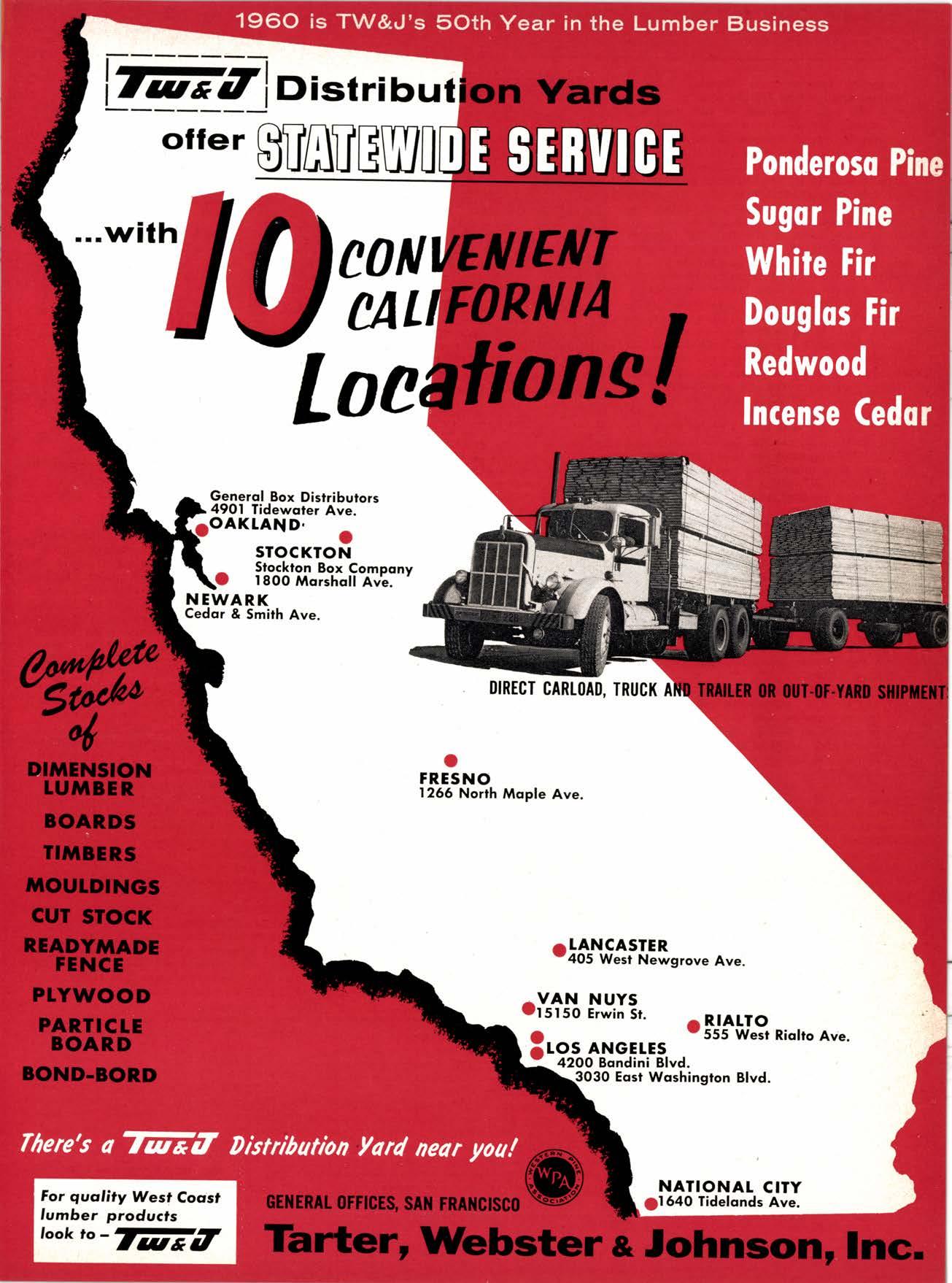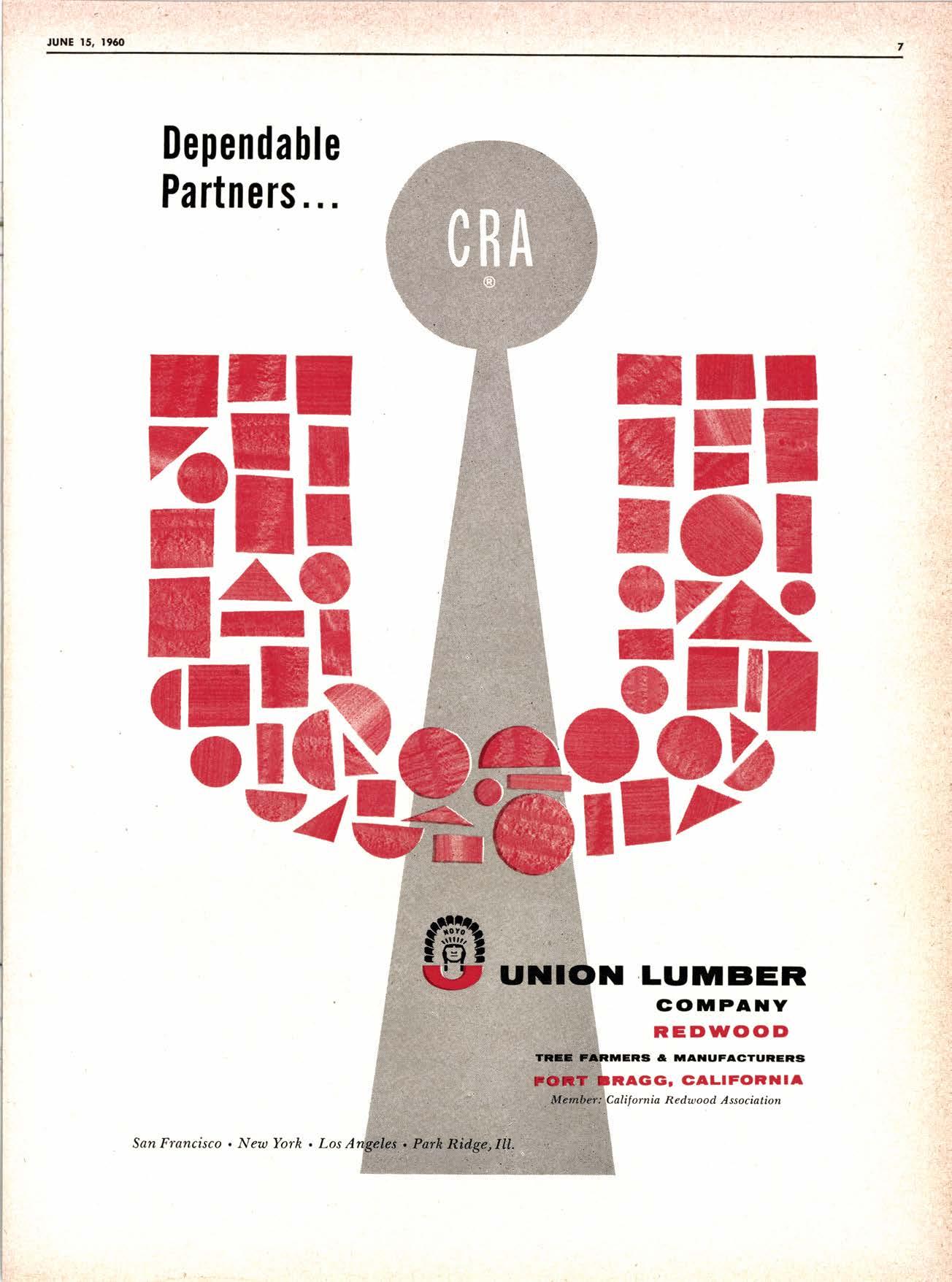
4 minute read
WT\Disr',oli ofre'$[A[EW[
ina,ncial a.$sistance in building nursing homes and housing for the elderly.
The lattor program, he sold' was s natural for the retell lumber dealer, a,nal tre urgod deslers to lnvestlgate postlbllltlos wlth loeal suthorltlos.
A strong appeal for aid from retail lumber dealers in getting building codes modernized throughout the country was made by Martin Bartling, president of the National Home Builders Association.
"All segments of the building industry must organize and work together if we are to flnd our way out of the jungle of outdated, obsolete building codes," he declared. As an example of what faces tjre industry, Mr. Bartling said that in metropolitan Chicago there were some 900 communities with 30 or more variations in codes.
"f'hink what a problem this creates for dealers in buying, stocking and delivering . materials. Many of them find that they slmply cannot make the investment in inventory to fft all these codes," he said.
One of the most pressing needs for modernizing codes is to keep costs in the building industry down,, Mr. Bartling explained.
'lBulldlng oosts ane rlsing ot a fa,ster paco t'ha,n other cosb, ond ll wo are to rdsrntoln a heolthy lnilustrp we must bullil a produot people can afiord to llve tn' he ssLl.
As an immediate goal, Mr. Bartling urged efrorts to have one of the existing four model codes adopted. These are the codes developed by the Southern Building Code Congress, fnternational Building Oficials Conference, Building Ofrcials Conference of America, and the New York Code Commission.
'T9hile these codes may not be perfect," Mr. Bartling said, "let's get them adopted, get our foot in the door, and then work for perfection."
At the opentng of hls.talk, ItIr. BartIlng ilrew e Bpontanoous round of applouse when ho saLl he "wanted to go on record as soJrlng tho home btdlders woulil glve complete cooperatlon to the retallers ln solvlng the problems ol our lndustry."
Mortlmer B. Doyle, executive vice-president of the National Lumber Manufacturers Association, also brought a messaS:e to Ore retail industry that was warmly received. He explained that in a recent meetlng of his association, industry principals recommended that the National Wood Promotion Program have its budget.ex- \ panded to about $2 million ennually.
Such expansion-still subject to acceptance by the membership of NLMA's reg:ional associations-would permit "an acceleration of NWPP activity all across the board, with particular emphasis on additional assistance to the retail dealer," he said.
A prfunary objectlvo of the lumber ma,nulaotilrrerr today, Mr. Doylo emphaslzed, ls to mako the job of selllng lumber amd wood products easler and moro profitable for the retall dealer.
In this connection, he pointed out that the individual producers and their regional associations are spending millions of dollars each year on the advertising' merchandising and promotion of regional species and brand names products.
(All theso actlvltles," Mr. DoYle strossed, "aro being potnted ln o slngle' posldve dlrectlon-to create lrnong: your retall yard customers and our own a new &warenegE, & now appr€cla- tlon of wood'g strenglh' beaut5r, economy, versotlllty end other vlttues."
Thomas J. Fox, chairman of NRLDA's Exposition Committee, reported that the Ekposition was the "fastest-growing, most dynamic show in the building industry."
IIe adilod that ho contrdontly expects more than 10,000 retall lumber deslers - to attentl the San Franclsco show, anil "the woy exhlbltore hove boon slgntng up for space, we &r€ now certaln that tt wtll be o record-breaklng show ln that rospocte tooJ'
Santa Monica. Calif., Dealer F'ox also emphasized that the management clinics at the show this year are being especially tailored to help get dealers ready to meet the most intensive competition for consumers' dollars ever experienced'
The education programs planned for the Sanr Francisco show cover such subjects as Selling to architects, builders and contractors; Cost control, office mechanization, a.nd financial management; Employee recruiting and sales management; Home improvement selling; Labor relations; Promoting and merchandising the "second home;" Selling outdoor living; Financing; and Customer relations.
Also speaking on features of the 1960 Exposition, James V. \Mright, Materials Handling director of the NRLDA, said that arrangements are nearing completion with 'San F'rancisco city authorities to close a street adjacent to Brooks Hall and the Civic Auditorium for a materials-handling demonstration. Another city street, running between the two exposition centers, has abeady been desigrrated as an area for outdoor exhibits.

Mr. Wright also reported substantial progress in further development of materials-handliirg information by the National. He said the NRLDA Dealer OPerating Guide is bbing expanded to include more materials-handling inf ormation.
IIe also said.a series of "fact pamphlets" were being prepared which would assist a dealer to determine his handling needs' The pamphlets are being especially written so dealers can quickly and easily select a machine or process to reduce materialshandling costs and increase proflts.
While it is too early for a complete evaluation of the Labor Reform Law passed last year, according to Kenneth C. McGuiness, labor law consultant for NRLDA, there is rhuch evidence that'it is working well.
"The restrictions on organizational and recogrrition picketing," Mr. McGuiness said in citing an example, "are belng agg"essively enforced by the General Counsel of the National Labor Relations Board. T'his is highly important because the Taft-Hartley amendments are enforced by the NLRB unfair labor practices procedure. fite General Counsel has anr absolute right to decide whether to act on unfair labor practice charges and, if he refuses to do so, no other relief is available."
Mr, McGuiness gave numerous other examples of how the new law has corrected Union abuses, but he also warned that some of the gains made bY the law are now threatened by possible passage of H'R. 9070, the biU exempting the building trades from restrictions on secondary boycotts.
"It thls bttl ts pasEed," 1l[r. McGulness et&tett. "lt sesms clear that Bulldlng Trades Unlong would be glven & vlrtually unlmfted rtght to brfng eecondory pressures on contractors and thelr suppllers."'
C. Armel Nutter, president of the National Association of Real Estate Boards, asked the retail lumber industry to support his association on several proposals now before the Congress
Ttre F'ederal Housing Administration Title I progtam (FHA-insured'loans for repair and remodeling), due to expire on June 30, "has proved that it is a vital tool in tJre highly desirable upgrading of housing in this nation," Mr. Nutter said. Criticizing the uncertainty that surrounds the program, the NAREB president said that "we are urging Congress to tell the nation' in effect, that it has earned its rank as a permanent activity."
Mr. Nutter also said that while there are reports of some improvement in the mortgage market for borrowers, "we must continue our efforts to make more money available for the purchase of homes on favorable terms."
One way this can be done is to prevail upon FHA to allow individuals to own mortgag:es insured by it, Mr. Nutter de(Continued on Page 24)











